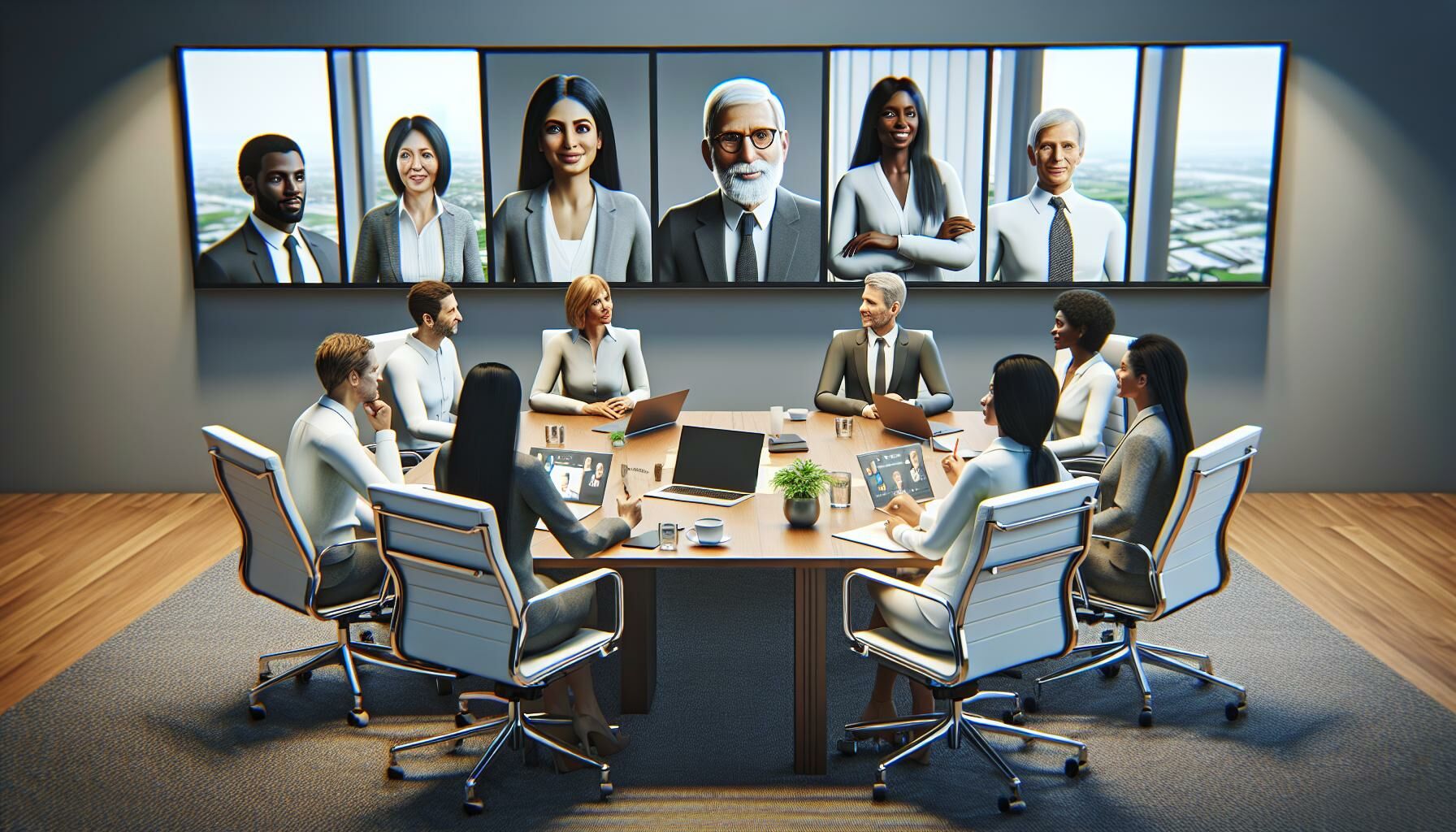In the fast-paced modern workplace, bridging the generation gap is becoming a critical challenge for organisations globally. This divide, which extends from experienced Baby Boomers through energetic Millennials to the rising Generation Z, introduces a diverse blend of viewpoints, backgrounds, and anticipations into the professional sphere. Tackling this generational gap goes beyond simply reducing conflicts; it involves leveraging this diversity to enhance innovation, productivity, and cultivate a unified workplace culture. Understanding the nuances of workplace communication preferences across different generations is the first step towards bridging this gap.
Generations currently in the workforce
Baby Boomers (born 1946–1964):
Baby Boomers, currently enjoying the highest incomes across various age groups, are voicing apprehensions about their financial security. They are worried that their earnings may not keep pace with escalating inflation rates. Research indicates that Boomers perceive advancements in life to be more challenging now than they were ten years ago. Additionally, they tend to believe that their living standards do not exceed those of their parents at a comparable age. This generation, once emblematic of youth and now moving into the later phases of life, underscores the difficulties in preserving a quality of life amid economic fluctuations.
Generation X (born 1965–1980):
Generation X, positioned between the Baby Boomers and Millennials, occupies a distinctive ‘middle child’ status among generational cohorts. This group merges the practicality seen in Boomers with the technological savvy and flexibility often attributed to Millennials. Known for their adaptability, Gen Xers have experienced major changes in technology and the economy, shaping their views on work-life balance. They treasure stability yet are celebrated for their independence and ability to think critically.
Millennials (born 1981–2000):
Millennials, named for coming of age around the turn of the new millennium, distinguish themselves as notably tech-savvy and advocate for a healthy balance between work and personal life, setting them apart from earlier generations. They pursue jobs that are not just jobs but carry meaning, and they prioritise flexible working conditions and constructive feedback more than conventional workplace incentives. Their formative years during economic downturns have led them to adopt a careful stance towards financial planning, with a leaning towards valuing experiences more than accumulating material possessions.
Generation Z (born 2001–2020):
Generation Z, the demographic group following Millennials, enters the workforce with a unique set of skills and perspectives. Born into a digital world, their proficiency with technology surpasses that of previous generations. Gen Z tends towards independence, valuing innovation and authenticity in their work environments. They are highly concerned with societal issues and expect their employers to uphold social and environmental values. As they begin their careers, Gen Z’s expectations challenge traditional workplace structures, pushing for more diversity, inclusivity, and flexibility in the workplace.

In today’s workplaces, differences between age groups are shaped by their distinct experiences with societal shifts and technological progress over various eras. Communication preferences markedly differ across generations, with older ones favouring comprehensive, direct exchanges and the younger demographic leaning towards brief, tech-mediated interactions. This discrepancy can lead to miscommunication if not aptly addressed. Concerning workplace atmospheres, a clear evolution is noted from the structured, traditional office hours preferred by the earlier generations to a more flexible, outcome-focused approach embraced by the younger workforce. This includes the growing acceptability and demand for remote working options, which have gained significant traction.
Effectively navigating these generational distinctions is paramount for cultivating a workplace that thrives on its diversity. It entails tapping into the distinctive skill sets and viewpoints that each generation offers, aiming to foster an environment that is both innovative and cohesive. Successfully addressing the nuances of generational differences can thereby elevate teamwork, enhance productivity, and significantly contribute to the success of an organization.
How to bridge the generational divide in a hybrid workplace
Foster open communication and mutual understanding.
Creating a culture of open communication is essential to overcoming the generation gap in the workplace. Employers should encourage dialogue that respects and acknowledges the diverse perspectives each generation offers. Regular team meetings, where employees from different generations can share their insights and learn from one another, help dismantle stereotypes and foster mutual understanding. In a hybrid workplace, utilising digital platforms to maintain clear communication ensures no one feels isolated, bridging the gap between in-office and remote staff.
Leverage generational strengths and expertise.
The diversity in the workplace brought by different generations can be a formidable asset if harnessed correctly. Baby Boomers and Generation X possess a wealth of experience and industry knowledge, whereas Millennials and Generation Z bring innovative ideas and digital fluency. By creating mentorship programmes that pair younger employees with more experienced ones, businesses can not only transfer critical knowledge but also blend traditional and modern approaches to problem-solving. Acknowledging and utilising each generation’s strengths leads to a more skilled and adaptable workforce.
Emphasise common goals and shared values.
Focusing on common goals and shared values can significantly reduce the impact of the generation gap. By outlining clear objectives and how each team member contributes toward achieving them, employers can align the diverse workforce towards a unified mission. Highlighting shared values, such as a commitment to quality, sustainability, or community involvement, also helps reconcile different generational viewpoints. In a hybrid workplace, affirming these shared goals and values digitally keeps everyone, regardless of location or generation, moving in the same direction.
Why having generational differences in the workplace is good

Generational differences in the workplace offer a unique advantage, enhancing diversity and innovation. By embracing the generation gap, companies can create a rich tapestry of experiences and perspectives that drive creativity and problem-solving. Teams benefit from a wider range of skills, from the seasoned expertise of Baby Boomers to the digital fluency of Generation Z. This blend of abilities enables businesses to tackle challenges from multiple angles, ensuring a more robust solution strategy.
Furthermore, the presence of diverse age groups promotes a culture of learning and mentorship. Older generations can share invaluable industry insights and soft skills honed over the years, while younger employees bring fresh ideas and familiarity with cutting-edge technologies. This reciprocal exchange not only boosts individual growth but also enhances team dynamics.
Incorporating generational diversity in the workplace fosters an environment where varied communication styles and work ethics coexist and complement each other. It encourages employees to adapt and be more flexible, characteristics that are paramount in today’s fast-paced business world. Such diversity in the workplace also prepares companies to better address the needs of their multigenerational customer base, as employees’ wide-ranging perspectives offer insights into different consumer preferences and behaviours.
Finally, overcoming the generation gap can strengthen organisational resilience. Teams that successfully navigate and leverage their internal differences are often more adept at handling external pressures and adapting to change. This adaptability is crucial for long-term success in an ever-evolving market landscape.
In essence, generational differences, instead of being a hindrance, can significantly enhance workplace dynamics. Businesses that recognise and harness these disparities are likely to see improvements in innovation, employee engagement, and overall performance.
How to manage generational gaps and differences in the workplace
Addressing the generational gap within workplaces transcends simple problem-solving, unlocking considerable opportunities for businesses. The inclusion and appreciation of the myriad strengths and insights offered by Baby Boomers, Generation X, Millennials, and Generation Z can significantly benefit organizations. This entails cultivating a work environment that promotes open discussions and consistently employs mentoring programs. This method not only broadens diversity but also stimulates innovation, enhancing the robustness and competitive stance of businesses.
Fundamentally, recognising and valuing generational differences can convert these variances from potential barriers into dynamic engines of growth and achievement. In the rapidly changing environment of the modern workplace, the ability to adapt to and capitalise on the unique contributions of each generational group is crucial.
Guides
